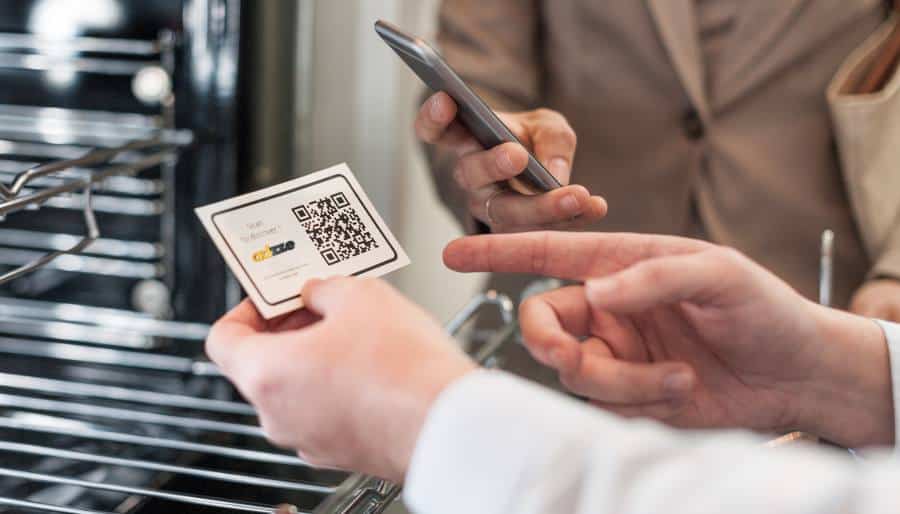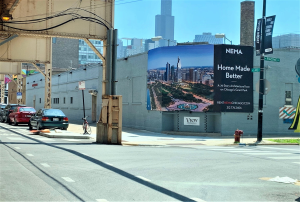QR Code Examples: Accessibility Beyond the Expected
QR codes have evolved far beyond their original purpose as quick links for product info or promotions. Today, they’re redefining inclusivity—especially in public spaces. From wayfinding in transit systems to accessing visual descriptions in museums, QR codes are quietly becoming one of the most impactful, low-cost accessibility tools available.
For marketing professionals, understanding the broader applications of QR codes—beyond retail and advertising—opens the door to more inclusive branding, better customer experience design, and increased social impact.
This article explores powerful, real-world QR code examples that make public spaces more accessible to all, and shows how thoughtful marketers can play a role in expanding this movement.
QR Code Examples That Promote Accessibility and Independence
Let’s start with the most common accessibility-enhancing use cases. These QR code examples are already being deployed in cities, transportation hubs, and educational institutions to empower individuals with disabilities:
Audio Descriptions for the Visually Impaired
One powerful example of QR codes in action is their use in museums, art galleries, or historical landmarks. Instead of relying solely on visual signage, a QR code at the entrance or next to exhibits allows users to access:
Audio narration of descriptions
Tactile map explanations
Multilingual support
🧠 Example QR code: A tactile-embossed QR code placed next to a painting links to an app that plays a curated audio guide for the visually impaired.
Wayfinding in Complex Urban Environments
Navigating large or unfamiliar public spaces can be difficult for people with cognitive or visual impairments. QR codes placed strategically around a city or building can link to:
Interactive maps
Step-by-step walking directions
Real-time location-based updates
These QR code examples aren’t theoretical—they’re already being used in transit systems like New York’s MTA and London’s Underground to guide travelers through stations.
QR Codes for Emergency Information
In public areas, access to emergency procedures or contact numbers can be life-saving—but printed signs may not always be visible or comprehensible to everyone. A QR code can:
Link to emergency evacuation audio
Display information in multiple languages
Connect directly to a response hotline
💡 Example of QR codes like this: In Tokyo subway stations, QR codes link to earthquake evacuation routes in 5+ languages, improving safety for both locals and tourists.
Digital Menus and Accessibility in Restaurants
COVID-19 normalized digital menus, but their accessibility potential is still underutilized. For visually impaired customers, QR codes on tables can offer:
Text-to-speech capabilities
High-contrast reading options
Font-resizing functionality
By extending this tech beyond hygiene and convenience, hospitality brands can demonstrate deeper accessibility awareness—and boost customer loyalty.
QR Code Examples in Education and Public Institutions
Educational institutions are leading the charge in experimenting with QR code-driven accessibility enhancements.
Libraries and Schools:
QR codes link to audiobook versions of printed texts
Classrooms use example QR codes on whiteboards to direct students to supplemental video content or braille-compatible digital files
Government Buildings:
QR codes provide multilingual forms, translation services, and assistance request features
Civic centers use QR codes to deliver hearing-impaired resources in American Sign Language (ASL)
These examples of QR codes show how simple it is to extend critical content beyond traditional formats.
Benefits for Brands and Cities That Embrace Accessible QR Code Strategies
Beyond serving people with disabilities, these QR code examples deliver value to marketers, city planners, and institutions:
Benefit | Why It Matters |
Positive Brand Perception | Inclusive design strengthens reputation |
Increased Reach | Serving wider audiences expands engagement |
Regulatory Readiness | Proactive compliance with ADA/local standards |
Improved UX for All | Better design helps everyone—not just disabled users |
This isn’t just good ethics—it’s smart marketing. A well-placed example of a QR code used for accessibility can say more about your brand values than any slogan.
How to Design Accessible QR Code Campaigns
Ready to implement QR codes that prioritize inclusivity? Here’s how to get started:
Use Large, High-Contrast QR Codes
Ensure your QR codes are easy to scan for people with low vision. Stick to black-on-white or dark-on-light color schemes.
Test with Assistive Tech
Ensure your linked content is compatible with screen readers, voice navigation, and other assistive tools.
Provide Alt Text or Verbal Prompts
Include audio or visual cues to help users understand what the QR code links to. Example QR code prompt: “Scan here for an audio guide of this artwork.”
Multilingual Content
Offer translated options for diverse populations. This expands reach while also supporting accessibility for non-native speakers.
Real-World QR Code Examples Worth Studying
Let’s look at a few standout implementations:
🏛 The Smithsonian Institution
Uses QR codes in exhibits to offer narrated walkthroughs, sign language videos, and historical context.
🚌 Madrid’s EMT Bus System
Each bus stop features a QR code that links to live schedule updates, route accessibility, and instructions in both Spanish and English.
🍽 Shake Shack
Their QR menu includes an accessibility mode that offers speech output and navigation shortcuts for those using screen readers.
Each of these example QR code deployments transforms passive infrastructure into responsive, user-friendly tools.
Final Takeaway: QR Code Examples That Include Everyone
As marketing professionals, we often think of QR codes as conversion tools. But these examples show their power to connect people with the world around them—regardless of ability.
When used intentionally, QR codes can:
Increase access to essential services
Empower individuals to navigate public spaces independently
Enhance brand reputation through inclusive, human-centered design
So next time you’re planning signage, experiential activations, or branded campaigns, consider this: Is there an example of a QR code you can use not just to engage—but to empower?






